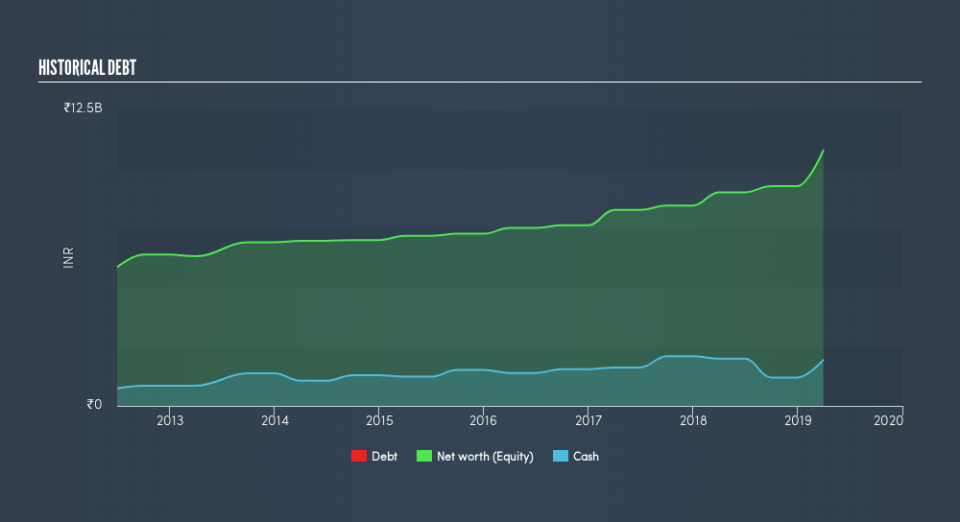Sify Technologies Limited (NASDAQ:SIFY): Time For A Financial Health Check

Want to participate in a short research study? Help shape the future of investing tools and you could win a $250 gift card!
Investors are always looking for growth in small-cap stocks like Sify Technologies Limited (NASDAQ:SIFY), with a market cap of US$205m. However, an important fact which most ignore is: how financially healthy is the business? Assessing first and foremost the financial health is essential, as mismanagement of capital can lead to bankruptcies, which occur at a higher rate for small-caps. The following basic checks can help you get a picture of the company's balance sheet strength. Nevertheless, this is not a comprehensive overview, so I suggest you dig deeper yourself into SIFY here.
SIFY’s Debt (And Cash Flows)
Over the past year, SIFY has ramped up its debt from ₹5.8b to ₹8.3b , which includes long-term debt. With this increase in debt, SIFY's cash and short-term investments stands at ₹1.9b , ready to be used for running the business. On top of this, SIFY has generated ₹1.4b in operating cash flow over the same time period, leading to an operating cash to total debt ratio of 17%, signalling that SIFY’s debt is not covered by operating cash.
Can SIFY meet its short-term obligations with the cash in hand?
At the current liabilities level of ₹14b, the company has been able to meet these obligations given the level of current assets of ₹17b, with a current ratio of 1.19x. The current ratio is calculated by dividing current assets by current liabilities. Generally, for Telecom companies, this is a reasonable ratio since there is a bit of a cash buffer without leaving too much capital in a low-return environment.
Does SIFY face the risk of succumbing to its debt-load?
SIFY is a relatively highly levered company with a debt-to-equity of 77%. This is a bit unusual for a small-cap stock, since they generally have a harder time borrowing than large more established companies. We can check to see whether SIFY is able to meet its debt obligations by looking at the net interest coverage ratio. A company generating earnings before interest and tax (EBIT) at least three times its net interest payments is considered financially sound. In SIFY's, case, the ratio of 2.99x suggests that interest is not strongly covered, which means that lenders may be more reluctant to lend out more funding as SIFY’s low interest coverage already puts the company at higher risk of default.
Next Steps:
SIFY’s high cash coverage means that, although its debt levels are high, the company is able to utilise its borrowings efficiently in order to generate cash flow. This may mean this is an optimal capital structure for the business, given that it is also meeting its short-term commitment. This is only a rough assessment of financial health, and I'm sure SIFY has company-specific issues impacting its capital structure decisions. I recommend you continue to research Sify Technologies to get a better picture of the small-cap by looking at:
Future Outlook: What are well-informed industry analysts predicting for SIFY’s future growth? Take a look at our free research report of analyst consensus for SIFY’s outlook.
Historical Performance: What has SIFY's returns been like over the past? Go into more detail in the past track record analysis and take a look at the free visual representations of our analysis for more clarity.
Other High-Performing Stocks: Are there other stocks that provide better prospects with proven track records? Explore our free list of these great stocks here.
We aim to bring you long-term focused research analysis driven by fundamental data. Note that our analysis may not factor in the latest price-sensitive company announcements or qualitative material.
If you spot an error that warrants correction, please contact the editor at editorial-team@simplywallst.com. This article by Simply Wall St is general in nature. It does not constitute a recommendation to buy or sell any stock, and does not take account of your objectives, or your financial situation. Simply Wall St has no position in the stocks mentioned. Thank you for reading.

